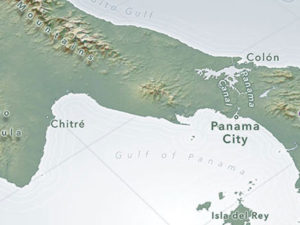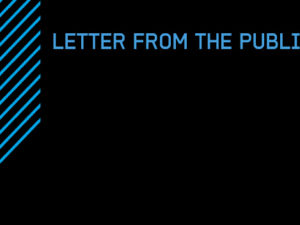Trimble CEO Rob Painter was the guest of a Fireside Chat conducted by Apogeo Spatial Publisher Myrna James, at the GeoBuiz Summit in Monterey, California in January 2024. This article is published due to a Strategic Partnership with Geospatial World. Rob shares the importance of innovation and empowering industries for Trimble. Benefits for major customers around the world include significant savings in time and cost, as well as better accuracy.
MYRNA JAMES: Trimble has a long history of innovation and empowering industries. What are a few examples?
ROB PAINTER: Oh, thank you, Myrna. It’s my pleasure to be here. When we talk about “the why” of Trimble, we say, “feed the world, move the world, build the world.” We have a mission of transforming the way the world works. How we approach that is by delivering products and services that connect the physical and digital worlds.
When it comes to innovation, we put over 15% of our revenue into research and development every year, which means we’ve spent literally billions of dollars on innovation in the last three to four years.
In agriculture, we’re going to need 69% more calories to feed the world’s growing population by the year 2050. How are we going to do that? We are using spatial technology to increase yield while simultaneously reducing inputs. In transportation, we have a driver shortage, with annual turnover in an average trucking company at almost 100%. Imagine losing your entire team every year. Using spatial technology to overlay routing and navigation with the business systems, we could save drivers time and help eliminate the shortage.
If we look at Trimble survey and geospatial technologies—our origin story—we are innovating at the edge of GNSS technology still today, through innovations such as tilt compensation and advanced positioning engines that are helping surveyors work more efficiently in areas in which they’ve never been able to easily use GNSS in before.
MYRNA JAMES: How is Trimble connecting the physical world to the digital world—and back?
ROB PAINTER: Trimble is known for our positioning and sensing technologies. We think of the technology stack as the intersection of “the where, the what and the why.” The “where” is spatial intelligence, the precision of the geometry.
The “what” looks like adding relevant attributes to enrich the spatial data, and the “why” looks at the problems we are trying to solve. We have a strategy of “connect and scale” to connect users, data, stakeholders, and workflows across the industry lifecycle. We build capabilities to do that.
MYRNA JAMES: How important is collaboration to you?
ROB PAINTER: Extremely important. We see an opportunity to move from optimizing tasks to optimizing systems, which we do with partners like Esri and Autodesk.
Independent companies have tech that optimizes tasks, so the next higher order opportunity is to solve for the systemic problems.
MYRNA JAMES: You have acquired many companies, including those with software for imagery processing. How has that enabled automation?
ROB PAINTER: Well, we haven’t talked about AI yet. eCognition’s feature extraction and Inpho’s photogrammetry workflows are certainly part of our concerted strategy to complement what happens with sensors.
That’s “the where” plus “the what” and “the why” that really help enable a workflow. Many of us in this industry have been doing AI and machine learning for years— we just didn’t brag about it.
We were doing IoT before there was IoT. We’ve been doing autonomy before there was autonomy. We’ve been doing AI since before it was AI. We’ve missed a bunch of branding waves that maybe we need to get on!
MYRNA JAMES: So really, it’s enabling the company to dive into the AI space with these features, and then to take it further?
ROB PAINTER: Yes, and it’s not AI for the sake of AI. What are we trying to do? We’re trying to get data and turn it into information, something actionable.
“In the world of construction, by doing the work right the first time, you eliminate the rebuild, which drives a lot of that waste and inefficiency. You have a sustainability benefit using our guidance and automation construction equipment for 40-50% productivity improvements.”
MYRNA JAMES: The first thing you said was “feed the world.” You’re leveraging technology for the sake of humanity, ultimately. And not everyone can say they’re doing that.
ROB PAINTER: I think the biggest sustainability benefits come through the application of our technology. In our “feed the world” arena for agriculture, with a machine learning application, we can detect the weed from the crop and spot spray, reducing the applied herbicide by 80-90%. That’s a profound benefit to the Earth.
In the world of construction, by doing the work right the first time, you eliminate the rebuild, which drives a lot of that waste and inefficiency.
You have a sustainability benefit using our guidance and automation construction equipment for 40-50% productivity improvements.
We spend so much time talking about what it costs to build our infrastructure or buildings, but more than 80% of the lifetime cost of those assets takes place after they’re put in place. It is critical to link these workflows.
MYRNA JAMES: Is there anything else you’d like to share?
ROB PAINTER: We have talked about a connected farm, a connected site, a connected supply chain, a connected forest, connected rail, connected utilities…
We’ve moved our strategy over the last few years to connecting what we’ve got better together, so we can show up as one Trimble to you, to the industry.
When I talk about our purpose, “feed the world, move the world, build the world,” that’s something worth showing up for. That’s work worth doing.





